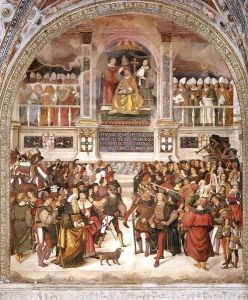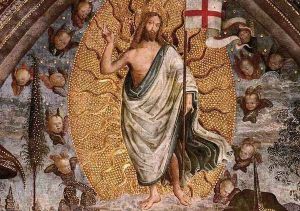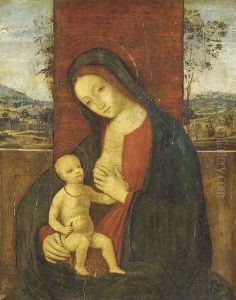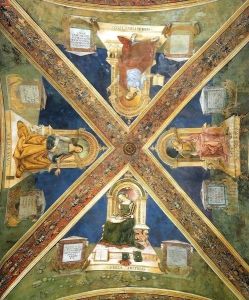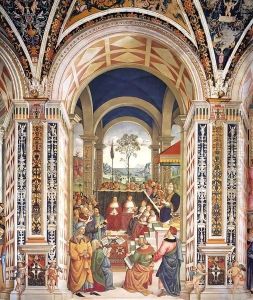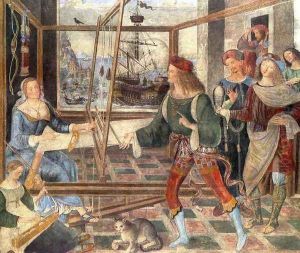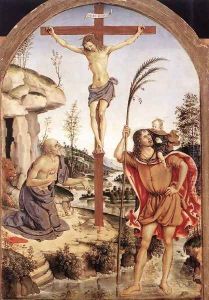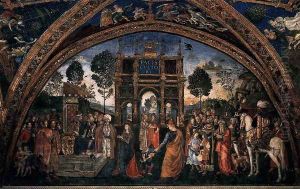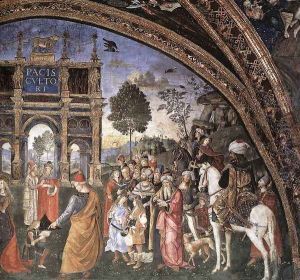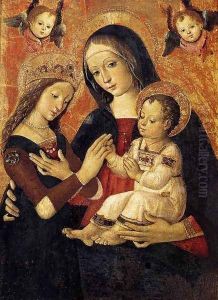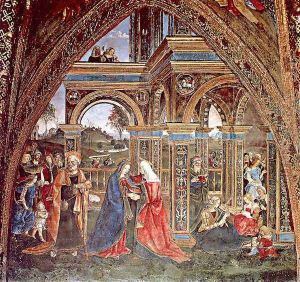Bernardino di Betto (Pinturicchio) Paintings
Bernardino di Betto, better known as Pinturicchio or Pintoricchio (meaning 'little painter' in Italian), was a prolific Italian Renaissance painter born in Perugia in 1454. He was renowned for his intricate and detailed frescoes, as well as his use of rich colors. Pinturicchio's style is characterized by delicate and elaborate decoration, and he was particularly skilled in creating frescoes that were both ornate and narrative.
Pinturicchio initially trained in Perugia but he spent a significant part of his career in Rome, where he worked on several major projects. His first notable commission in Rome was in the Borgia Apartments in the Vatican, where he worked under the patronage of Pope Alexander VI. Here, Pinturicchio painted a series of frescoes depicting scenes from the lives of various saints and the Virgin Mary. The artist's work in the Borgia Apartments is particularly noted for its use of bright colors and inclusion of detailed landscapes and decorative motifs.
In addition to his work in the Vatican, Pinturicchio was also commissioned to decorate the Bufalini Chapel in the church of Santa Maria in Aracoeli in Rome. His frescoes in the chapel tell the story of St. Bernardino of Siena, and they are celebrated for their vivid storytelling and the lifelike portrayal of characters.
One of Pinturicchio's most important works outside of Rome is the Baglioni Chapel in the Collegiate Church of Santa Maria Maggiore in Spello, Umbria. The chapel's frescoes, which include scenes from the life of the Virgin Mary, are considered to be among his masterpieces, showcasing his skill in composition and his ability to convey complex narratives through art.
Pinturicchio's other significant works include the decoration of the Piccolomini Library adjacent to the Siena Cathedral, where he depicted scenes from the life of Pope Pius II. Throughout his career, Pinturicchio also produced a number of altarpieces and panel paintings.
Despite his success, Pinturicchio's later years were marred by financial difficulties, and he died in Siena in 1513. His work was later overshadowed by the High Renaissance masters such as Raphael, with whom he had collaborated early in his career. However, Pinturicchio remains a significant figure in the Italian Renaissance, especially for his contributions to fresco painting and his influence on the development of decorative art during the period.
